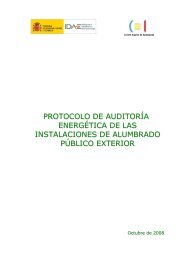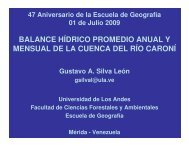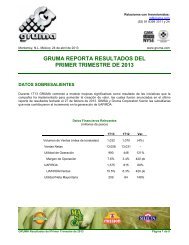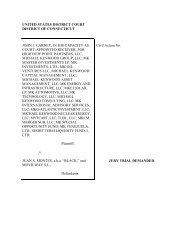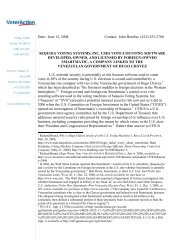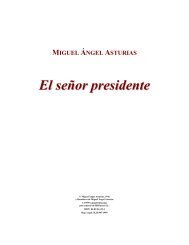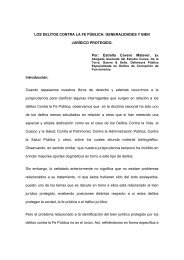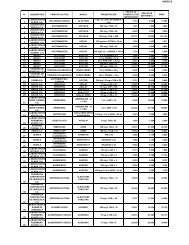broschuere ee zahlen en bf
broschuere ee zahlen en bf
broschuere ee zahlen en bf
You also want an ePaper? Increase the reach of your titles
YUMPU automatically turns print PDFs into web optimized ePapers that Google loves.
sc<strong>en</strong>arIo For Increased expansIon<br />
54 R<strong>en</strong>ewable Energy Sources in Figures<br />
Long-term sc<strong>en</strong>ario 2010 for r<strong>en</strong>ewables expansion<br />
in Germany<br />
The long-term sc<strong>en</strong>ario 2010 [134], commissioned by the Federal Environm<strong>en</strong>t Ministry, describes<br />
consist<strong>en</strong>t quantity frameworks for the long-term expansion of r<strong>en</strong>ewable <strong>en</strong>ergy and<br />
of <strong>en</strong>ergy supply in g<strong>en</strong>eral in Germany, and deduces the resulting structural and economic<br />
impacts. The sc<strong>en</strong>arios of the Lead Study 2010 project the developm<strong>en</strong>t paths for <strong>en</strong>ergy supply<br />
in a way that <strong>en</strong>sures achievem<strong>en</strong>t of the over-arching objectives of climate protection, effici<strong>en</strong>cy<br />
and expansion of r<strong>en</strong>ewable <strong>en</strong>ergy in Germany. However, the Lead Study 2010 was<br />
unable to cover all the aims of the Energy Concept of autumn 2010 1) , which means that it has<br />
a provisional character. Other examples of objectives implem<strong>en</strong>ted in the sc<strong>en</strong>arios include<br />
the developm<strong>en</strong>t of electric mobility, the expansion of combined heat-and-power g<strong>en</strong>eration,<br />
and the limitation of biomass use to ecologically acceptable domestic pot<strong>en</strong>tial.<br />
Strategies for achieving climate objectives: Expansion of r<strong>en</strong>ewable <strong>en</strong>ergies and<br />
ext<strong>en</strong>sive effici<strong>en</strong>cy measures<br />
The developm<strong>en</strong>t paths of the Lead Study 2010 indicated that final <strong>en</strong>ergy consumption<br />
would fall by 38 % by 2050 (compared with 2009). This developm<strong>en</strong>t – in addition to the<br />
clear restructuring of electricity supply in favour of r<strong>en</strong>ewables – makes a contribution to the<br />
marked decrease in primary <strong>en</strong>ergy input. Primary <strong>en</strong>ergy consumption will fall to 84 % of<br />
its 2009 level by 2020 and about 56 % by 2050. In 2050 Germany will be importing only 32 %<br />
of the pres<strong>en</strong>t quantity of fossil <strong>en</strong>ergy. The r<strong>en</strong>ewables share of 18 % of gross final <strong>en</strong>ergy<br />
consumption required for 2020 by the EU directive is exc<strong>ee</strong>ded in the successful sc<strong>en</strong>arios,<br />
with a figure of 21 %. After 2020, r<strong>en</strong>ewables as a whole start to become the dominant <strong>en</strong>ergy<br />
source. In the sc<strong>en</strong>arios, their share of primary <strong>en</strong>ergy increases to nearly 55 % by 2050. The<br />
restructuring of <strong>en</strong>ergy supply is thus very far advanced at that point. More than 85 % of<br />
electricity is supplied by r<strong>en</strong>ewable <strong>en</strong>ergy sources. In the heat sector, more than half the demand<br />
is met by r<strong>en</strong>ewable <strong>en</strong>ergy sources. And ev<strong>en</strong> in the mobility sector, the contribution<br />
made by r<strong>en</strong>ewables (excluding electricity) is already considerable at 42 % of motor fuel requirem<strong>en</strong>ts.<br />
1) the lead study 2011 is int<strong>en</strong>ded to depict all the German governm<strong>en</strong>t’s objectives, but at the time of going to press it was<br />
still in preparation.




